This article was medically reviewed by Mark Ziats, MD, PhD. Dr. Mark Ziats is an Internal Medicine Physician, Scientist, Entrepreneur, and the Medical Director of xBiotech. With over five years of experience, he specializes in biotechnology, genomics, and medical devices. He earned a Doctor of Medicine degree from Baylor College of Medicine, a Ph.D. in Genetics from the University of Cambridge, and a BS in Biochemistry and Chemistry from Clemson University. He also completed the INNoVATE Program in Biotechnology Entrepreneurship at The Johns Hopkins University - Carey Business School. Dr. Ziats is board certified by the American Board of Internal Medicine.
wikiHow marks an article as reader-approved once it receives enough positive feedback. In this case, 91% of readers who voted found the article helpful, earning it our reader-approved status.
This article has been viewed 127,350 times.
If you’ve spent time outdoors in areas where ticks carrying Lyme disease are common (in particular the Northeastern part of the United States),[1] be on the lookout for any symptoms associated with Lyme disease. You may not know you’ve been bitten! Make sure you’re able to recognize the symptoms of Lyme disease as soon as they arise. Lyme disease is usually treatable with a course of antibiotics, so see your doctor for a professional diagnosis as soon as any symptoms arise.[2]
Steps
Identifying Initial Symptoms of Lyme Disease
-
1Watch for a circular rash. The most telltale sign of Lyme disease is the presence of a rash known as erythema migrans, or EM. The rash most commonly develops between seven and ten days after the bite, but it may develop in as few as three days or as many as thirty days after.
The rash will expand over the course of a few days, potentially growing to more than 12 inches (30.5 cm). EM rashes are almost always circular in shape, and may clear up in the center, leaving the visual representation of a “bull’s eye.”[3]- Note that the rash only appears in 70 to 80% of infected individuals, so the lack of a rash does not guarantee that you are not infected.
- The rash may arise anywhere on the body and may even occur in multiple locations, though it will usually envelop the location of a bite.
- Though the rash may feel warm to the touch, it will likely not itch or cause you any pain. The rash may begin looking uniformly red, then develop the "bull's eye" or a more complex shape as they expand.
- The edges of an EM rash may be irregular or hard to see. It may also ultimately range in size from that of a coin to the width of your back! Have any rash that develops following a tick bite checked out by a doctor.
-
2Pay attention to fever, chills, and aches. Within three to thirty days of infection, you may begin experiencing mild symptoms that could potentially be mistaken for another type of illness. If you know you were bitten by a tick, even a simple fever may indicate you’ve been infected with Lyme disease, so pay diligent attention to your health following a tick bite.[4]
- Muscle and joint aches may come and go, and will vary in severity.
- Swollen lymph nodes are another classic sign of infection.
- Recurring chills or headaches, and a persistent fever are other symptoms to watch out for.
- If you’re experiencing these symptoms, even mildly, see a doctor to ensure you’re not infected.
Advertisement -
3See a doctor immediately if suffering from intense fatigue. A powerful case of fatigue is another early warning sign of a Lyme disease infection. If you are so tired or sore that you struggle to get out of bed, see a doctor.
Though it may feel like you simply have a bad case of the flu, it is important to make sure you’re not infected. Fatigue symptoms may even dramatically lessen after a short period of time, though this does not indicate that you are not infected. [5]
Recognizing Long-Term Symptoms of Lyme Disease
-
1Remain alert for headaches, neck stiffness, and joint pain. Though they may develop in the course of a few days, some symptoms of Lyme disease may take months to develop.
Severe headaches, stiffness in your neck, or arthritis-like pain in your joints may indicate an untreated infection. See a doctor immediately if you're experiencing any persistent stiffness, particularly in your knees, shoulders, elbows, or ankles.[6]
Muscle, bone, joint, and tendon pain from a Lyme disease infection may be intermittent. Numbness, or tingling in the hands and feet are also cause for concern. -
2Look out for signs of facial muscle issues. Bell’s palsy is a condition in which the muscles on your face lose definition or begin to droop, and may be caused by Lyme disease.
In fact, any issues with your facial muscles may indicate a Lyme disease infection. If any part of your face becomes weaker, or it seems as though you’ve lost control of muscles on any part of your face, see a doctor as soon as possible.[7] -
3Watch out for heart complications. Lyme carditis is a rare condition that occurs as a symptom of Lyme disease and affects the regularity of your heart beat. Watch out for heart palpitations or any irregularity in your heart beat, including sudden, drastic changes in heart rate. Dizziness and shortness of breath may also indicate Lyme carditis.[8]
- See a doctor as soon as possible if you're experiencing any of these symptoms.
- Note that these and many other symptoms related to a Lyme disease infection may come and go, or even disappear without treatment. The infection, however, may still be present, and will require treatment to prevent any further health complications.
-
4Be aware of any changes in your neurological health. The important neurological issues to watch out for include numbness, cognitive problems, and shooting pains. These may indicate inflammation of the brain or spinal cord, and need to be addressed immediately.[9]
- Shooting pains in any part of your body that occur at night are a readily recognizable sign of neurological issues.
- Numbness or tingling sensations in your extremities may also indicate potential neurological issues caused by Lyme disease.
- Any cognitive issues you notice, even simply changes in your short-term memory, may also indicate neurological complications.
-
5Recognize the long-term effects of untreated Lyme disease. If initial symptoms are mild, you may not notice a Lyme disease infection for years. Weakness, especially weakness associated with severe fatigue is a cause for concern, as is any partial or complete loss of short-term memory. Further, if any of the following symptoms also occur, especially in combination, you should see a doctor immediately:[10]
- Heightened sensitivity to light or sound.
- A noticeable loss of appetite.
- Pain that moves around your body, or pain behind your eyes.
- Any loss of feeling or recurring numbness in the extremities.
- Trouble swallowing.
- Depression or seizures.
- Hepatitis of other liver complications.
Knowing Important Lyme Disease Facts
-
1Remove ticks as soon as possible. In order to be infected with Lyme disease, a tick will usually have to be attached to your body for 36 hours. This allows for plenty of time to safely remove a tick and prevent infection.
Be sure to check yourself, your children, and your pets for ticks after spending time outdoors in areas where Lyme disease had been reported. -
2Get a professional diagnosis. It is especially hard to diagnose a case of Lyme disease. A clear “bull’s eye” rash is the only way to readily diagnose early Lyme disease, as this is the only symptom unique to this disease; however, not everyone develops the rash.
Furthermore, many of the other symptoms associated with Lyme disease are very similar to the symptoms cause by other, more common illnesses.
You may not know you’ve been bitten — so you may not suspect Lyme disease yourself. Bites themselves are tiny, and often entirely painless.
You will need your blood tested by a doctor to diagnose Lyme disease without the presence of an EM rash. These antibodies may not be present in your blood until a few weeks after infection. You will likely have to go through multiple tests at various levels of specificity to establish an accurate diagnosis.
If you see any other tests advertised to test for Lyme disease that do not involve a blood test, these tests are not legitimate. -
3Expect to treat Lyme disease with antibiotics. Your doctor will guide your through the treatment process of Lyme disease, which will likely include antibiotics. Depending on what stage your Lyme disease is in when you are diagnosed, the length of time you will need to take antibiotics and which antibiotic you need to take may vary.
In early disease (with EM rash), you would need to take for about two to three weeks every day. Once you begin treatment, your EM rash may subside, and pain and neurological issues should stop worsening.
However, muscular and joint aches may persist for some time, as well as trouble concentration and short-term memory.
Warnings
- Untreated Lyme disease can lead to serious and long-term health issues. See your physician as soon as possible if you think you may be infected.⧼thumbs_response⧽
- Know that it is possible to catch Lyme disease more than once, so stay on the lookout for symptoms, even if you’ve been infected before.⧼thumbs_response⧽
References
- ↑ http://www.cdc.gov/lyme/stats/maps.html
- ↑ http://www.cdc.gov/lyme/signs_symptoms/index.html
- ↑ http://www.cdc.gov/lyme/signs_symptoms/index.html
- ↑ http://www.cdc.gov/lyme/signs_symptoms/index.html
- ↑ http://www.cdc.gov/lyme/signs_symptoms/index.html
- ↑ http://www.cdc.gov/lyme/signs_symptoms/index.html
- ↑ http://www.cdc.gov/lyme/signs_symptoms/index.html
- ↑ http://www.cdc.gov/lyme/signs_symptoms/index.html
- ↑ http://www.cdc.gov/lyme/signs_symptoms/index.html
About This Article
If you think you have Lyme disease, look for the most telltale symptom: a circular rash covering a tick bite that develops a “bull’s eye” shape as it gets bigger. This rash is a clear sign that you don’t have some other illness if start to develop a fever, chills, or aches. You should also be concerned if you suffer intense fatigue and are too tired to leave your bed. As Lyme disease develops, it can show up as severe headaches, neck stiffness, or arthritis-like pain in your joints after a few months. If you notice any of these symptoms, see a doctor so they can give you a proper diagnosis and treatment plan. For more help from our Medical co-author, including how to recognize the symptoms of Lyme disease that has been untreated for years, scroll down.
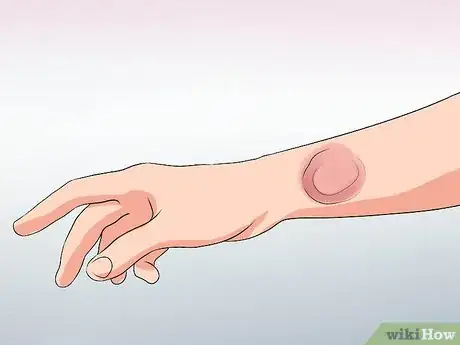


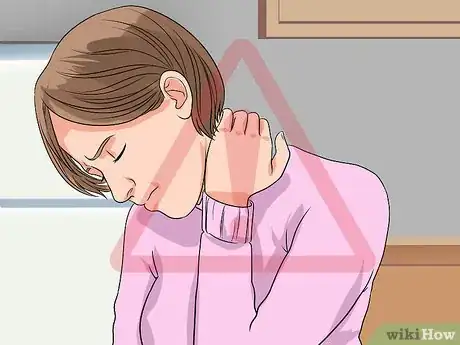
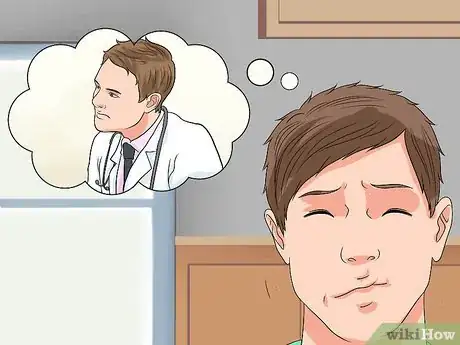
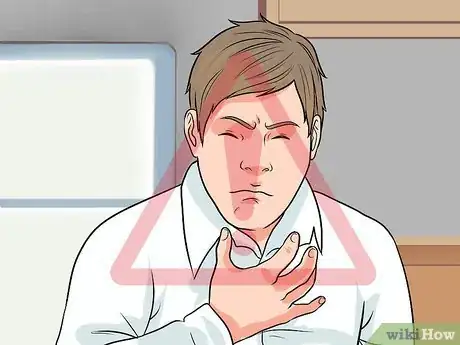



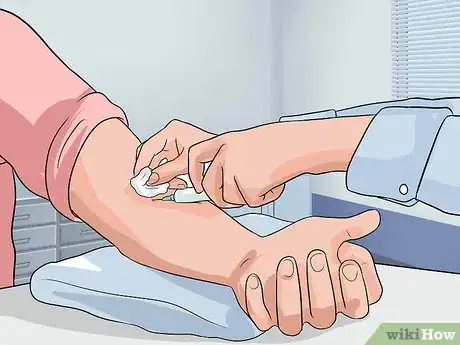


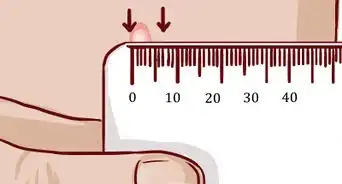
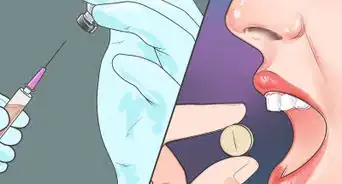


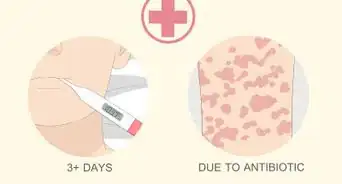





-Step-11.webp)










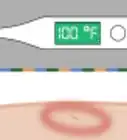

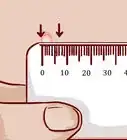




































Medical Disclaimer
The content of this article is not intended to be a substitute for professional medical advice, examination, diagnosis, or treatment. You should always contact your doctor or other qualified healthcare professional before starting, changing, or stopping any kind of health treatment.
Read More...